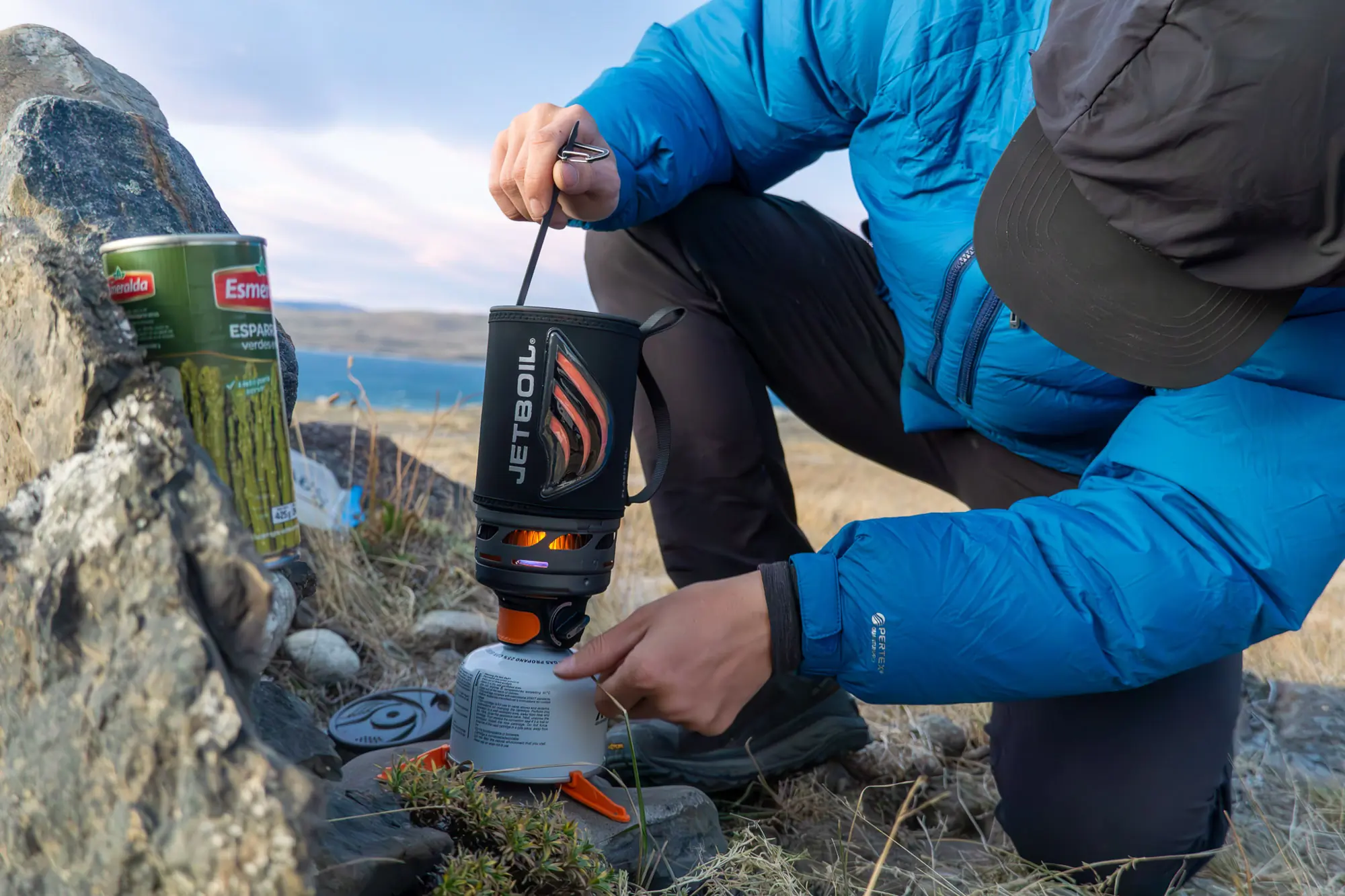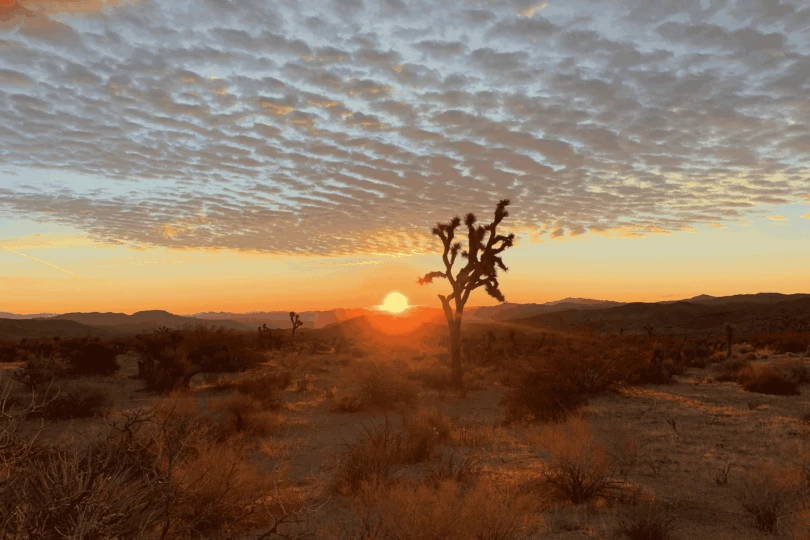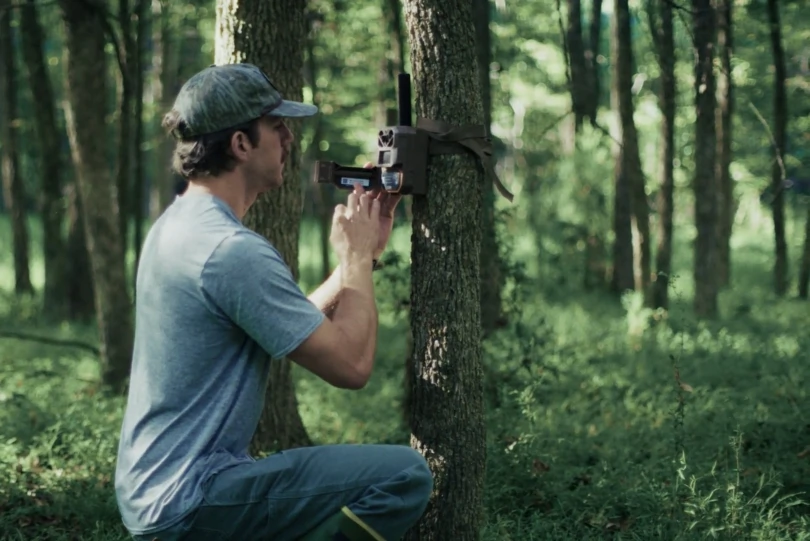I reached the top of the Mt. Sopris overlook and sat down to enjoy the view. I opened my pack, pulled out my Ganesha stove, and started to gather some loose tinder from the surrounding area. There was no burn ban in place, so I wasn’t breaking any laws by getting a fire started in the mouth of the new stove I was testing.
The stove has a slick design. It folds flat so it easily packs into a bag. It’s lightweight, double-walled, and opens like a pop-up book. I’d had mine for several months and had tested it on multinight camping trips, and day trips like this one. The little stove continued to impress me with its smokeless flame and easy cooking.
I continued feeding the fire medium- and small-size twigs and sticks for a few minutes until my water was boiling. Then I took it off, dropped in a teabag, and sat back to enjoy the view while the fire burned out.
In short: I haven’t seen anything like it. The Ganesha wood-burning, smokeless stove is lightweight, foldable, and efficient. It’s a well-designed piece of gear from a small startup out of Crested Butte, Colo. It isn’t the fastest backpacking stove, nor is it the most compact — but it uses natural fuel, is super efficient, smokeless, and is easily transported and stored. For that reason, it has a leg up on other similar titanium wood stoves. It won’t be available until June 1, 2024, but the stoves are available for preorder if you contact Ganesha.
If you’re in the market for a backpacking stove, check out our guides to the Best Backpacking Stoves and the Best Camping Stoves to compare the Ganesha with.
- Weight: 7.8 oz.
- Packed dimensions: 9.9" x 6.9" x 0.5"
- Assembled dimensions: 5.25" x 5.25" x 6.8"
- Claimed boil time (700 mL): 4-6 min.
Pros
- Very lightweight
- Packable
- Uses biofuel or alcohol burners
- Insanely easy setup
Cons
- Boil times vary depending on type/condition of biofuel
- Discolors significantly after several uses
The Ganesha Cookstove Project
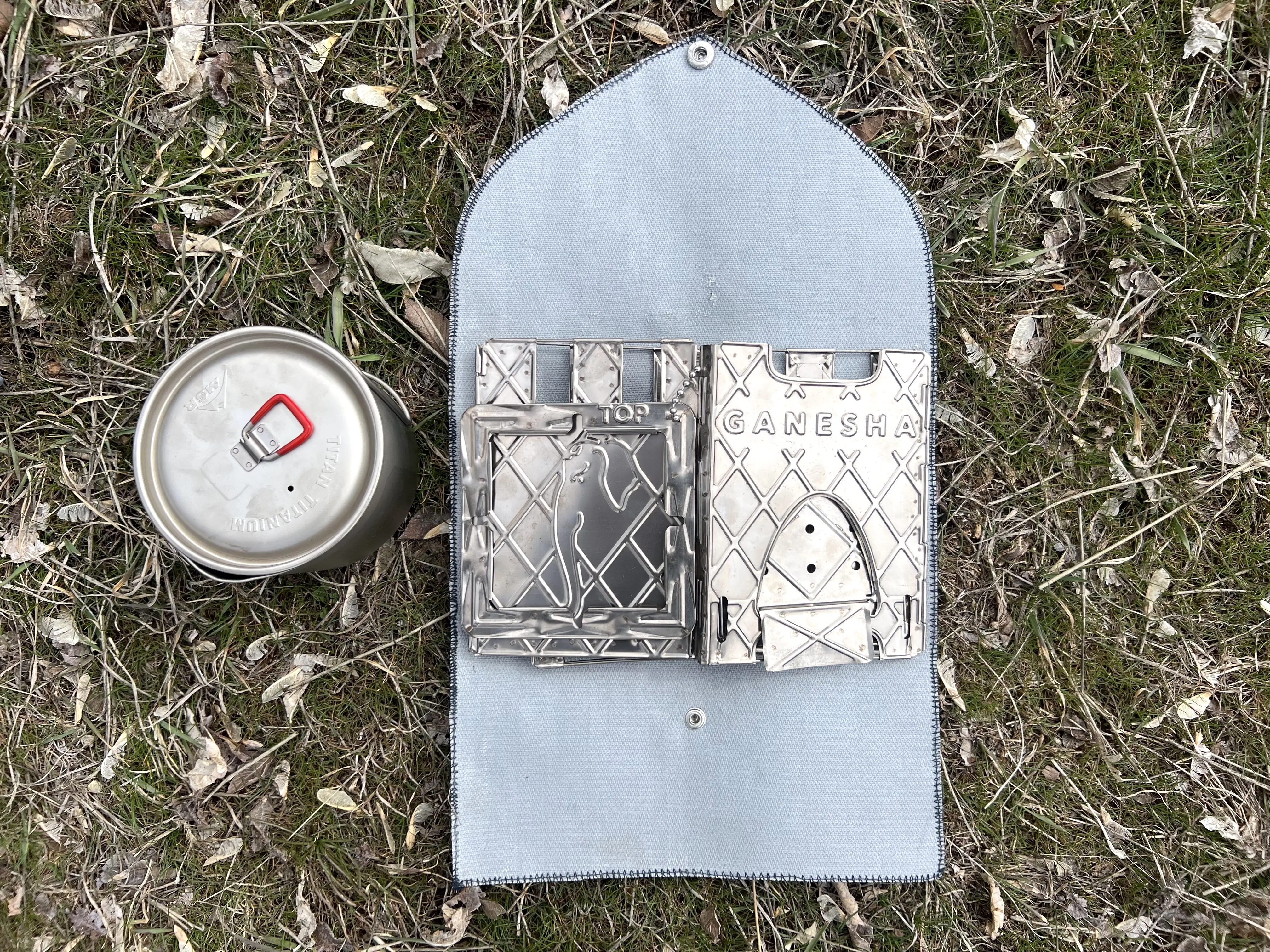
There are a lot of companies out there making packable wood stoves for camp cooking. GearJunkie just recently reviewed a battery-powered wood stove from LOFI. Last summer I reviewed BioLite’s EcoZoom Versa Rocket Stove. Going back even further, we’ve tried the Überleben Flatpack Stove, Vargo Outdoors, and of course, the Solo Stove Lite. There are also other (less packable) wood stoves like the TOAKS Titanium. However, the Ganesha Ultralight Stove is distinguishable from those other biofuel stoves for several reasons.
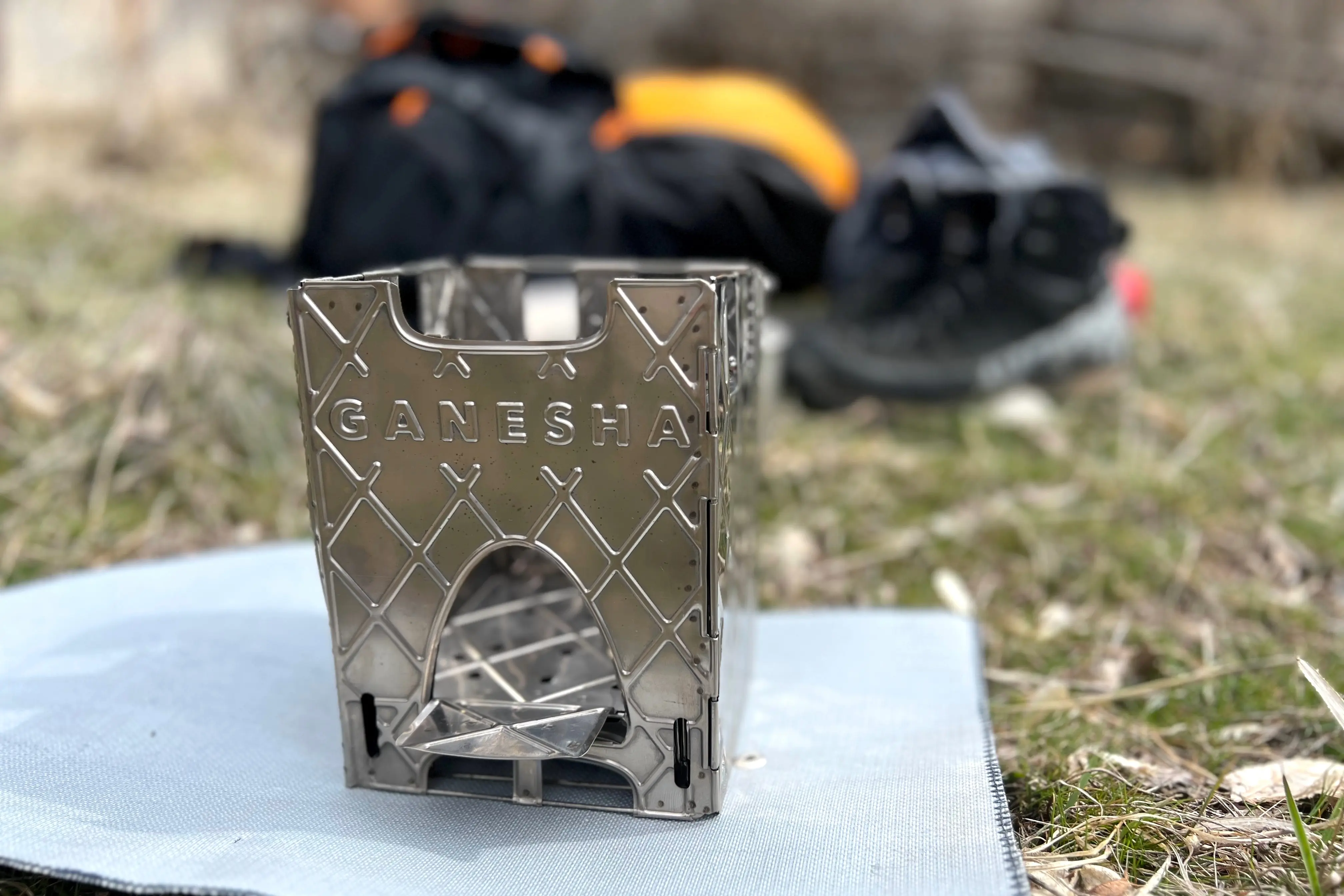



Around 2015, Brice Hoskin, Ganesha’s founder, started designing a lightweight stove for backpackers. But while traveling in Nepal, he realized that developing countries also badly needed an alternative to open-flame cooking. So he pivoted.
Instead of bringing the stove into the outdoor gear market, he distributed Ganesha stoves to families in developing countries, like Nepal. The Ganesha Cookstove Project aims to provide fuel-efficient, clean-burning, easy-to-use stoves to rural villagers in the Nepalese Himalayas. There, these stoves are used in homes indoors as a primary means for cooking and heating food efficiently — without smoke.
Since then, the Ganesha Cookstove Project has changed a lot of lives in Nepal with its stoves. Now, Ganesha is bringing the stove to the States. This summer. it’s launching as a backpacking brand, and the Ganesha Ultralight Stove will be available in the U.S. in June 2024.
The Humanitarian Stove designed and distributed in Nepal differs from the Ultralight Stove I tested. But the gasifier concept, design, and packability are much the same.
Ganesha First Impressions
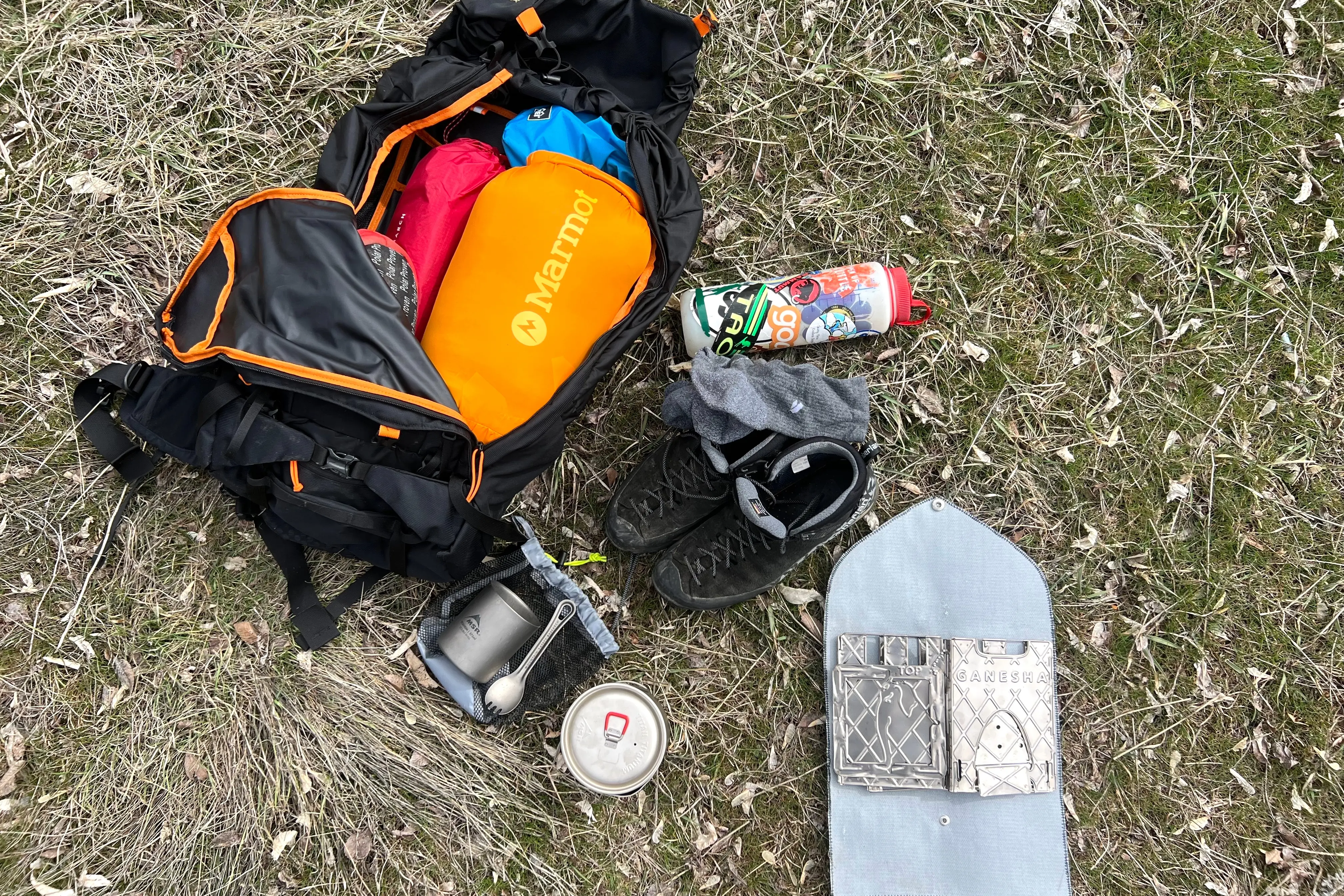



I was immediately impressed with this stove when I pulled it out of the box. Unlike the BioLite wood stove I tried last summer, it’s very lightweight and packable. Unlike the LOFI stove, it needs no battery; unlike the Überleben stove, no assembly is required. And unlike the Solo Stove Lite, it packs flat, making it easy to slip into my pack, a sleeve, or a box of camping gear.
Like a pop-up book, when you press the jointed corners of the flattened stove, it automatically takes shape. The inner wall lines up with the outer wall, and the perforated fuel chamber floor drops into place.
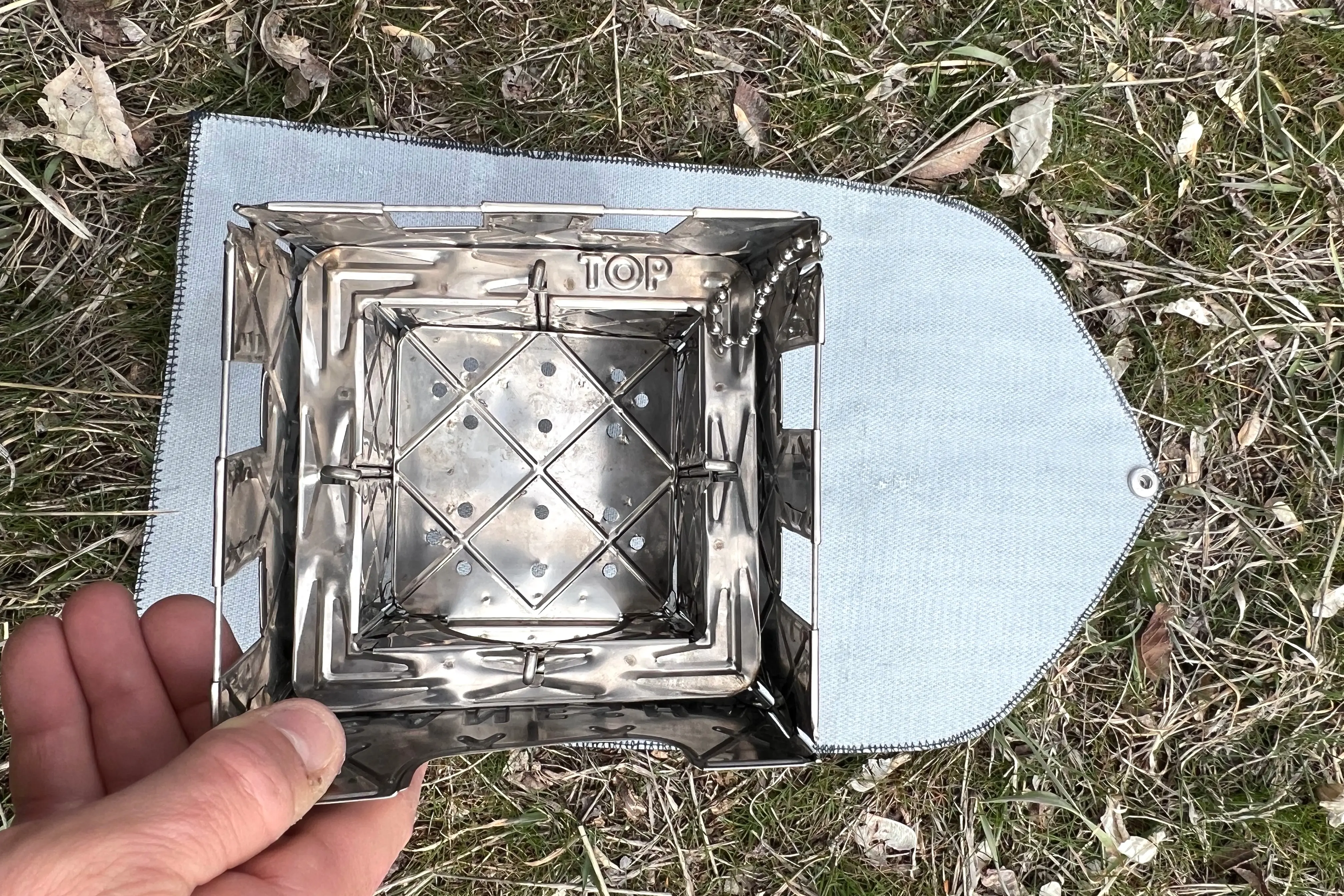



All the user has to do is slip the top on and the stove locks together. Assembly takes seconds, and disassembly is just as fast.
The provided fire-retardant ground cloth offers a barrier so you don’t scorch the earth wherever you set up to cook. It doubles as a carrying case to keep the insides of your pack marginally safe from char and smudging. Although, I’ll tell you from experience it does little to contain the smell: your pack will smell like campfire when carrying the Ganesha around.
Gasifier Tech
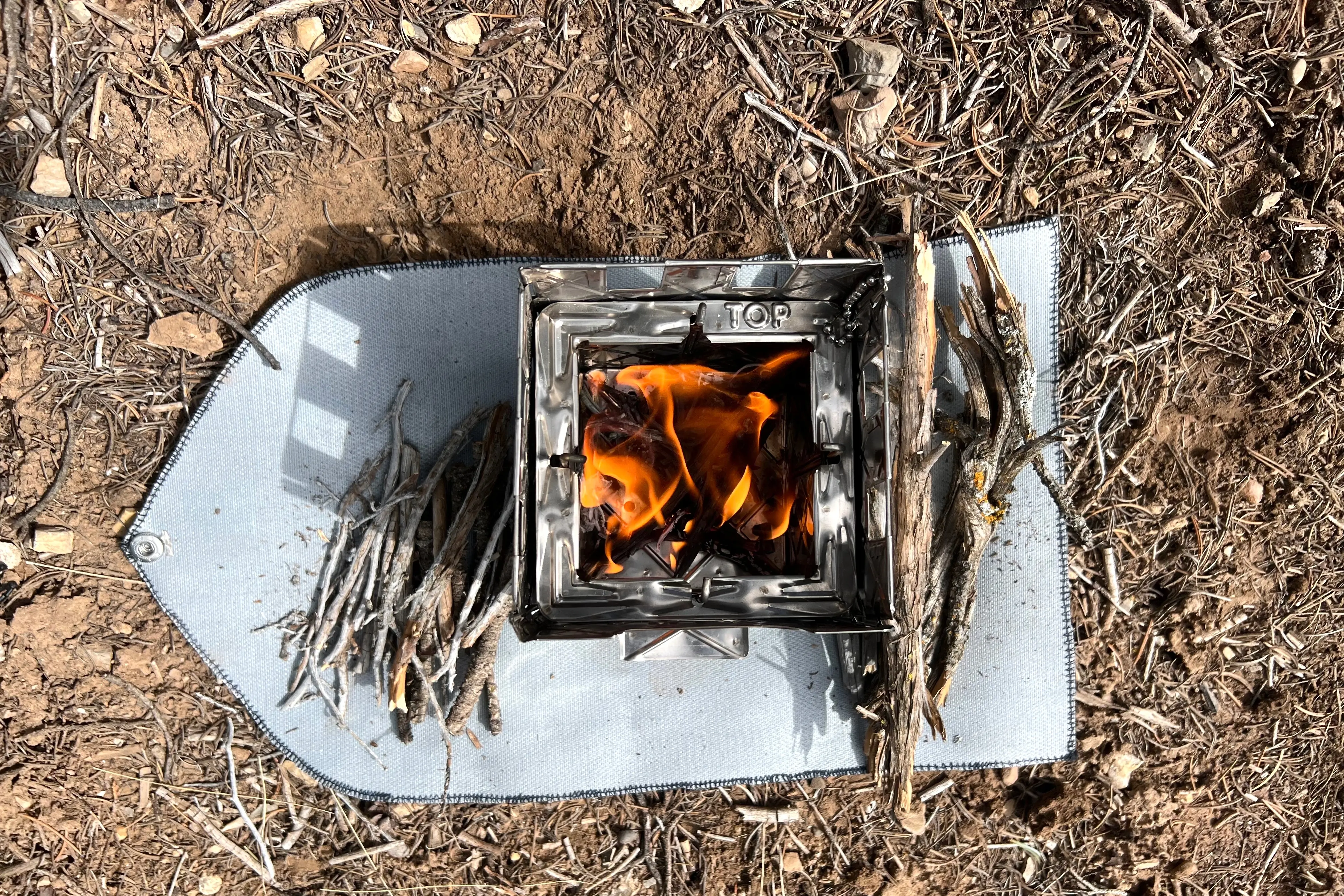



While you don’t see many gasifier stoves that fold flat for ultralight packing, the technology is fairly common. This design burns wood more efficiently and creates less soot as air is pulled up through the double walls, incinerating smoke as it exits the stove. That’s what makes it “smokeless.” It’s an effect called secondary combustion.
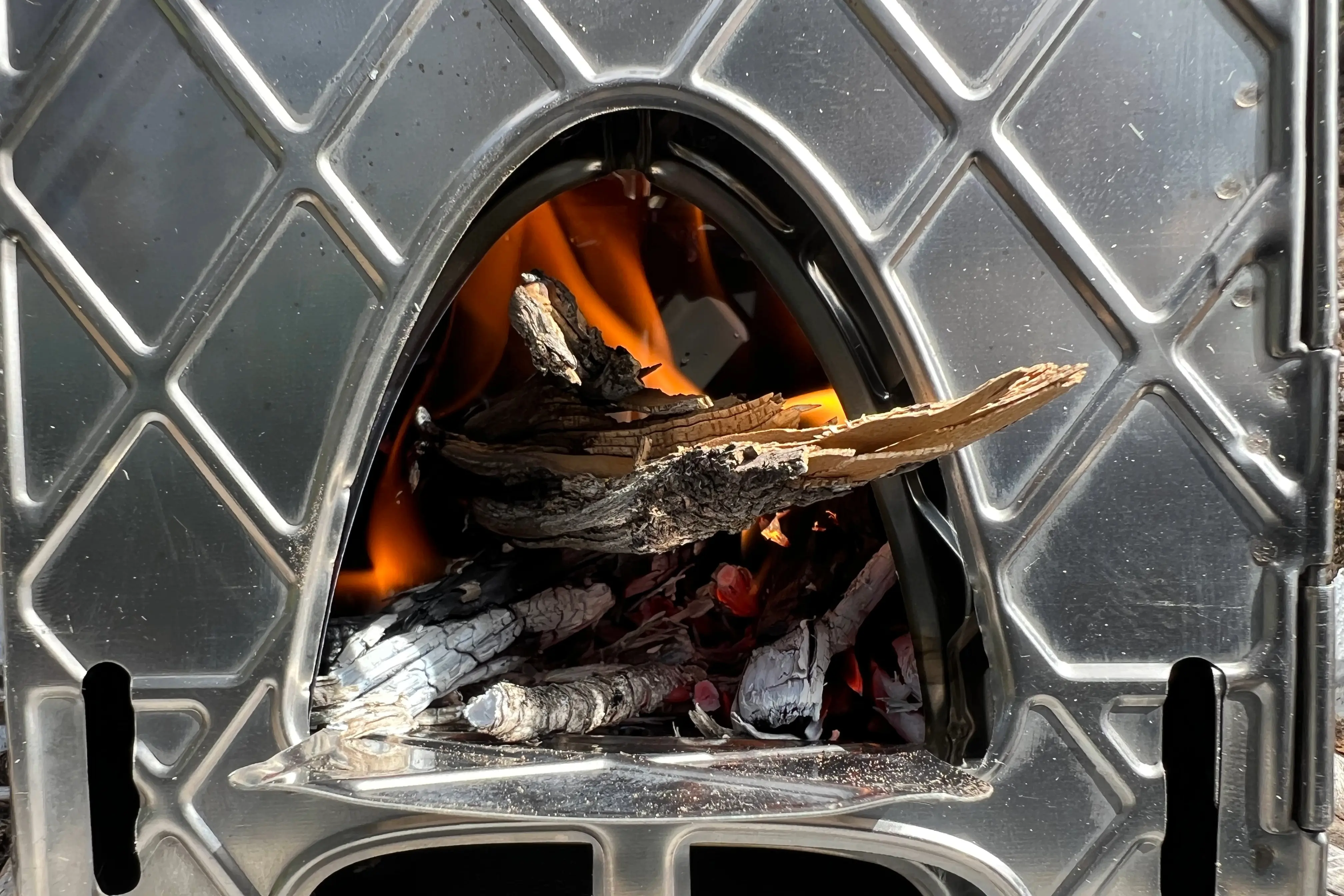



In Nepal, that means fewer negative health effects from cooking indoors (breathing in cleaner air). And, less time is required for collecting firewood and tending to an open fire. In the backcountry, that translates to burning less fuel, taking less from your environment, and smelling less like a campfire when you get home.
According to Ganesha, this stove can burn wood, dried herbivore dung (like cow patties), and is also compatible with alcohol burners. This is something not all wood stoves can do.
Ganesha Ultralight Stove: In the Field
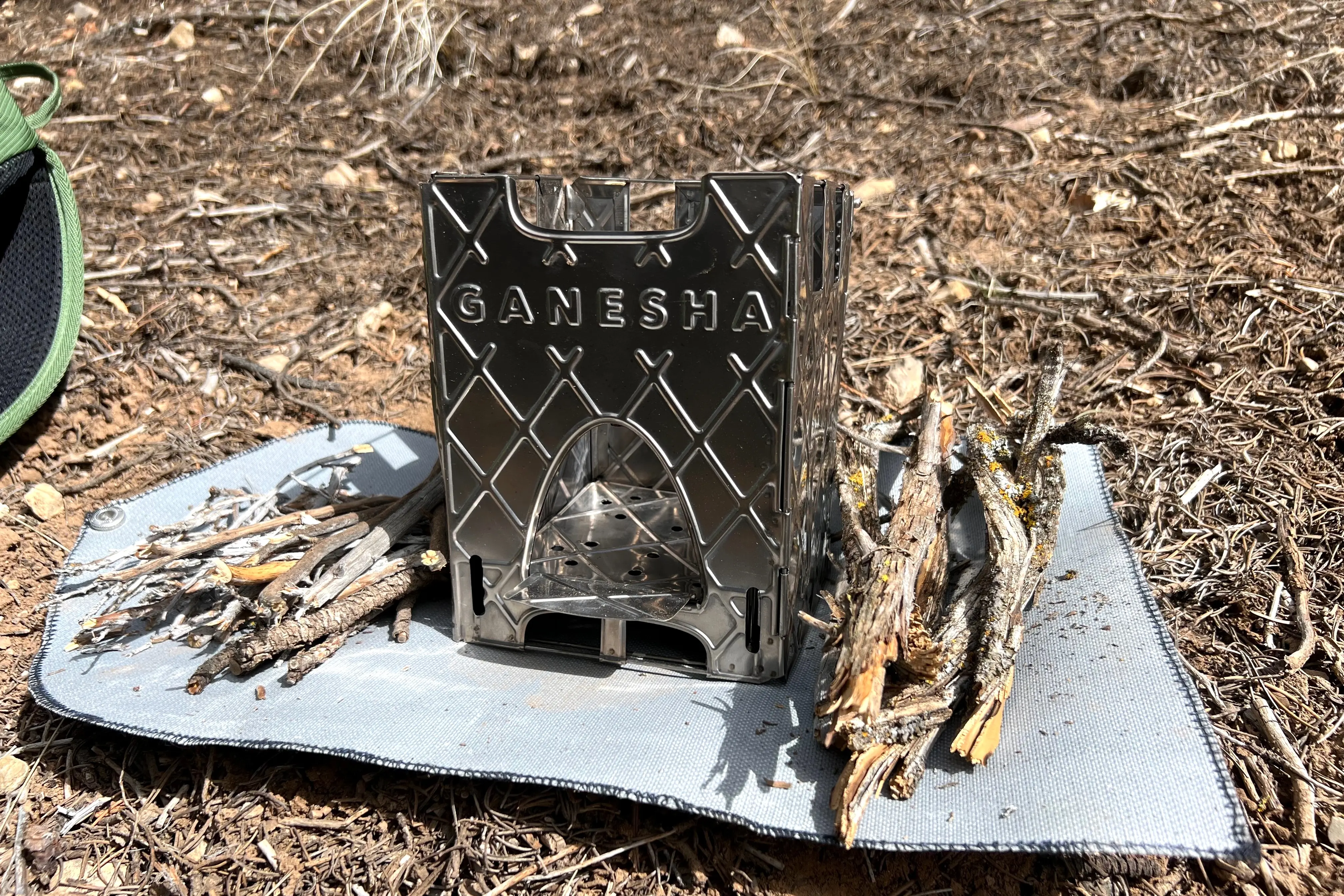



If you’re familiar with the art of firemaking, getting one going inside the Ganesha is a piece of cake. Start with the smallest tinder you can find and work your way up to medium-sized sticks and branches. You’ll have to break or cut your fuel to 3-5-inch lengths to make it fit into the Ganesha. Fuel can be loaded into the mouth of the stove, or directly into the top.
If firewood is plentiful and dry, you can get this stove started quickly. However, in wet conditions, areas where there’s little available biofuel or frequent burn bans, this stove would be challenging to use.
Boil Time
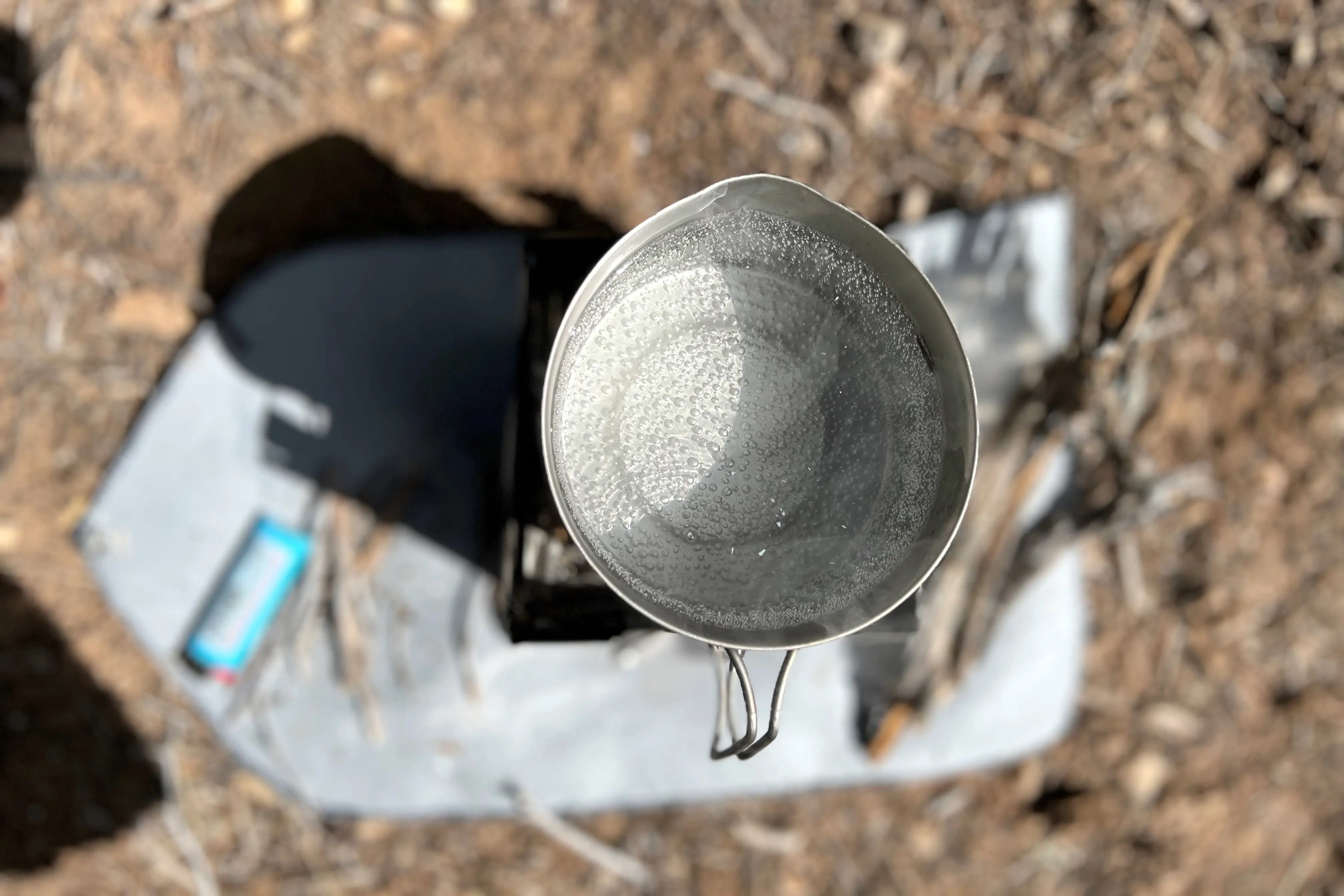



Ganesha claims that its Ultralight Stove can boil water in 4-6 minutes. Obviously, that is dependent on how big of a fire you get going, and how well you tend to it. In my experience, it’s usually closer to the 6-minute end of that spectrum — and it’s taken as long as 10-15 minutes.
By the same token, if you really got that fire roaring, you could probably hit a 3-minute boil time.
Smoke-Free Cooking
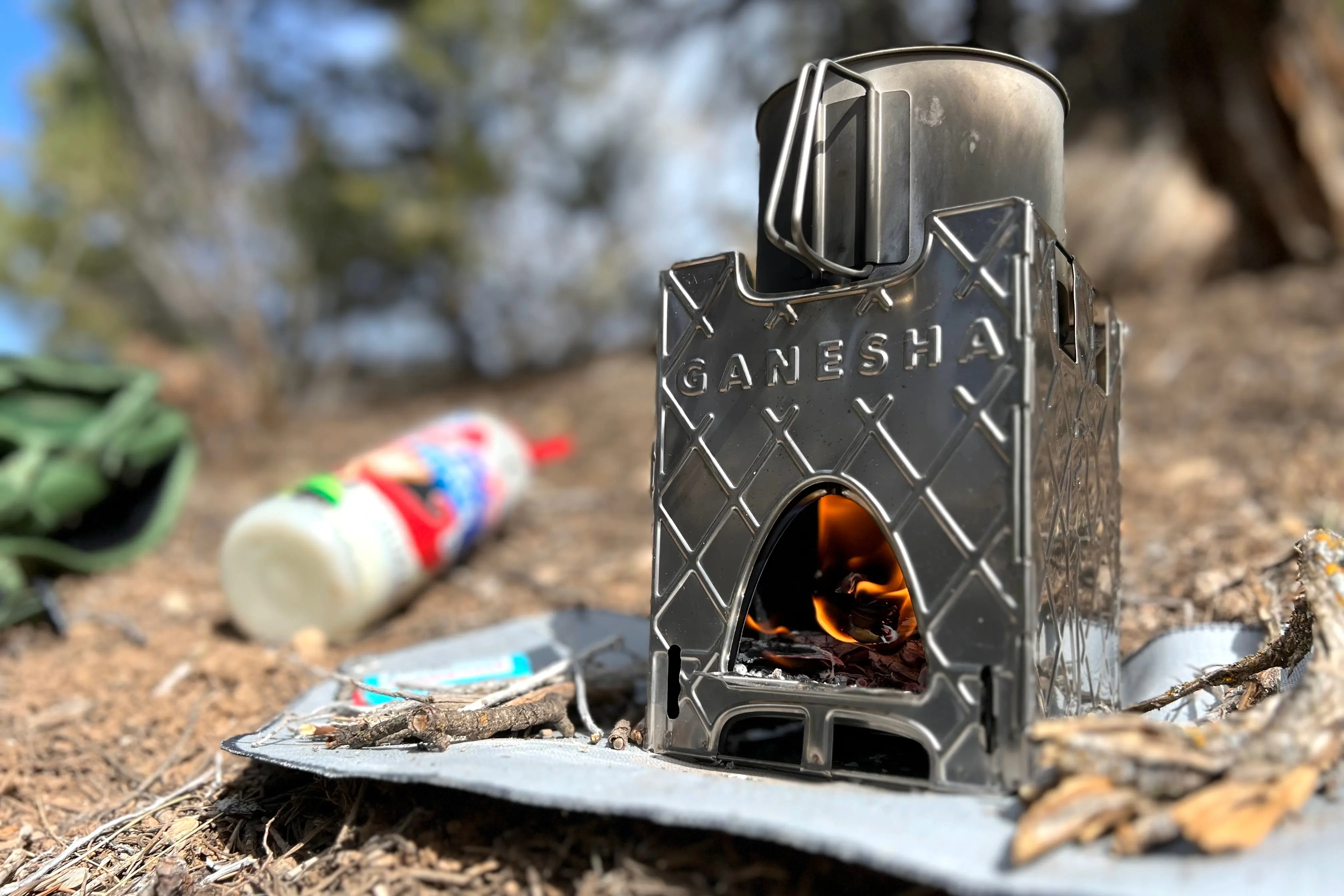



As with most gasifier stoves, this one works best when you get it good and hot. The first few minutes of use will have some smoke. But once the flame is going and the air between the inner and outer walls is sufficiently hot, the smoke diminishes significantly and quickly. The hotter you get it, the less smoke you’ll see.
This stove works great with most camp cookware that’s safe to use over open flames. I wouldn’t put a cast iron on it, as I’d be concerned about its stability under such weight — but you could do it. Generally, any kettle, cup, mug, bowl, or pot that has a metal base wider than 3×3 inches will fit.
Durability and Weight
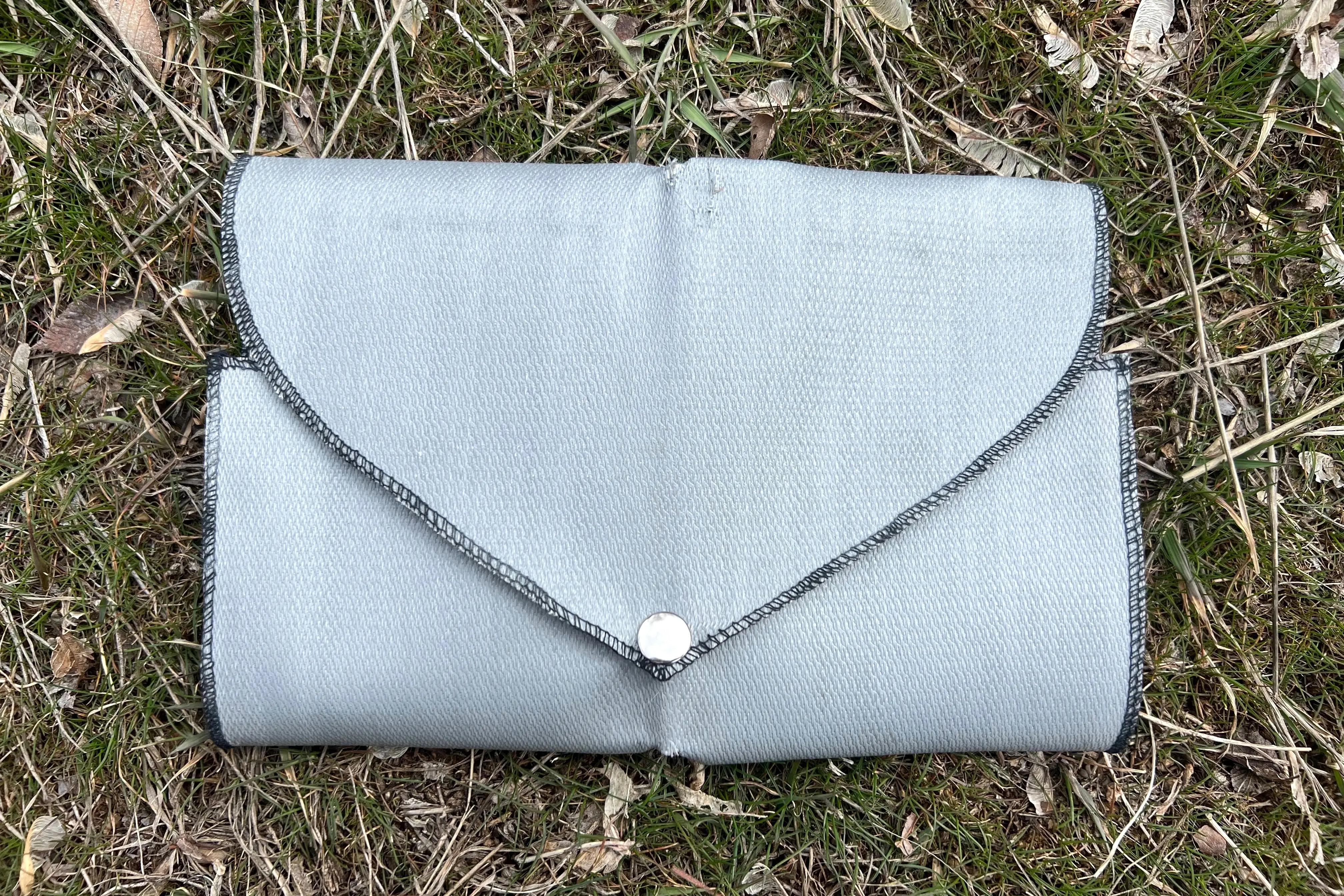



I haven’t had any structural issues with unfolding and refolding the Ganesha, even after having some pretty hot fires in it. If I see any weaknesses in the hinges or other places, I’ll update this review later. But for now, the titanium is holding up to the abuses of general outdoor use. Its thin walls have proven more resilient than they feel.
I used this stove on several camping trips last fall, and on day trips throughout the winter when I wanted to heat up a lunch or make a hot drink at my destination. I never hesitated to throw it in my pack, as the weight is negligible and it took up as much space as a magazine … something that can’t be said for most wood stoves.
Considerations, Drawbacks
As with any stainless titanium or steel stove, the shiny, brand-new look of the Ganesha Ultralight Stove will not last. After a single use, the flames discolor the inside of the stove, and there’s no going back. After several uses, you may see discoloration on the outer walls, too. So don’t get too attached to its out-of-the-box sheen.
Smoke stink is also a factor. Whenever I put it in my backpack and took to the trail, I could expect my pack to smell like smoke when I opened it. The gasifier tech may save you and your clothing the stink of smoke. But it still leaves a stench when you pack it in. If you’re good about cleaning your Ganesha after every use, that shouldn’t be much of a problem. A good rinse seems to do the job.
As mentioned, the titanium walls of the Ganesha Ultralight Stove are also pretty thin. It’s still a hardy piece of gear, but you should be gentle with the Ganesha nevertheless. It is possible to bend parts of the stove. And if they don’t fit together well, the stove won’t perform as well.
Ganesha Ultralight Stove: Who Is It For?




For backpackers looking for a cleaner alternative to using canister stoves, the Ganesha Ultralight Stove is a great option. You won’t have to carry butane or propane with you, you can rely on your surroundings for fuel, and it’s ultralight and packable.
As long as you have access to dry biofuel and aren’t under a burn ban, you’ll have no problems. However, if you are, this stove is versatile enough to accommodate an alcohol burner instead.
For car campers, the Ganesha Ultralight Stove could be useful if you run out of gas fuel for your primary camp cooking stove. It can easily stash inside a camping gearbox or live in the car.
It also wouldn’t be a bad backup if you live somewhere with frequent power outages or massive storms. Just like the villagers who use Ganesha stoves daily in Nepal, you can use this as a primary means of cooking if you don’t have any other.
I’ve really enjoyed using my Ganesha stove. It won’t replace my MSR Pocket Rocket or my beloved JetBoil. But I will continue using it when I’m not in a rush, or whenever I want to cook over a fire. And if I ever need a backup stove, I’ll know I have it in my camping box.
The Ganesha Ultralight Stove is not yet available to purchase — it will be available starting June 1, 2024. Until then, GearJunkie customers can get on the preorder list by contacting Ganesha directly. On the Ultralight’s webpage, there is a section with preorder instructions.
The Ultralight Stove comes in two different styles: stainless steel ($70), which will be 13 ounces, and the titanium version ($130), which is 7.8 ounces and a competitive weight for biofuel stoves for the ultralight crowd. Eventually, Ganesha hopes to offer different sizes for car camping, humanitarian aid, and even at-home use.
For more information about the stoves, go to the Ganesha Cookstove Project website.


